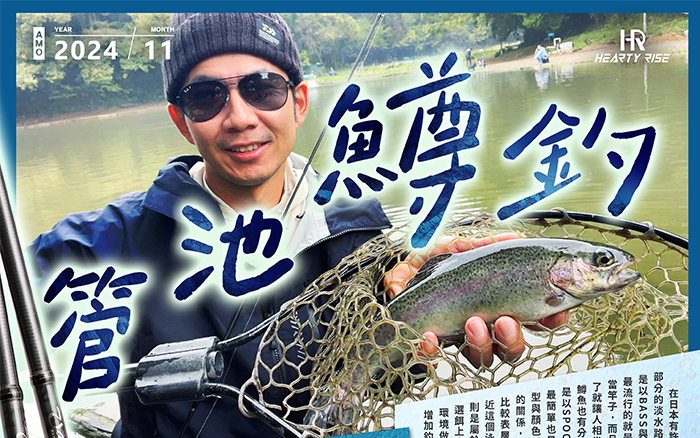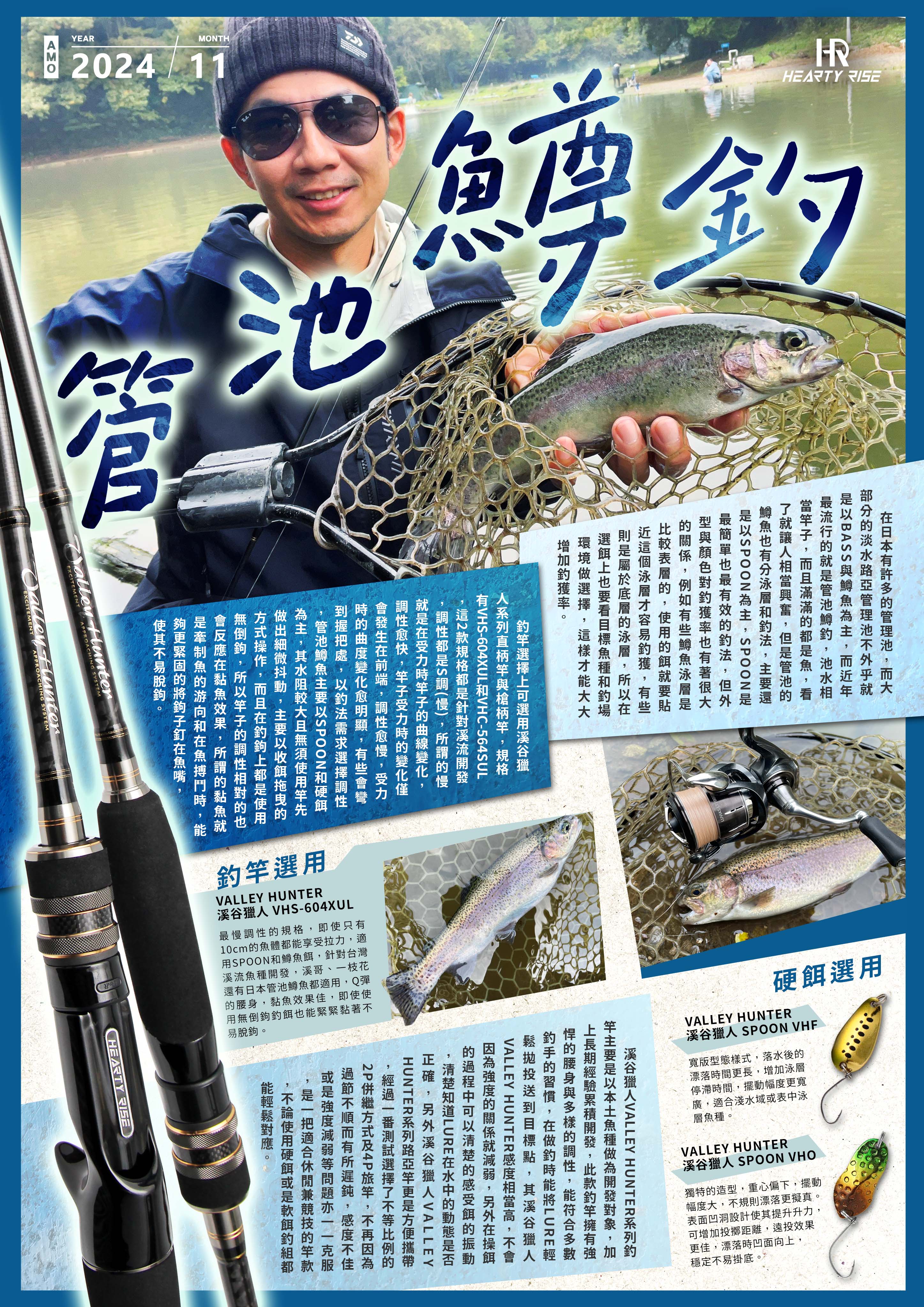
【PRODUCT INFO】HR VALLEY HUNTER II LURE MULTI PCS TRAVEL ROD
2024/11/26
【VIDEO INFO】HR TRANSPARENT STORAGE BAG HB-2734
2024/11/29In Japan, there are many fee fishing ponds, and most freshwater lure fee fishing ponds focus primarily on bass and trout. In recent years, trout fee fishing has become the most popular activity. The water in these ponds is usually quite clear, and they are stocked with an abundance of fish, which makes for an exciting fishing experience. However, trout in the ponds also have different swimming layers, and fishing techniques vary accordingly. The main method is used with Spoon, which is simple yet highly effective. The shape and color of the spoon are crucial to the catch rate, as they must closely match the prey that the trout are feeding on. For example, some trout tend to swim near the surface, so lures targeting these fish should be designed to stay near the surface. On the other hand, some trout occupy deeper layers, so the choice of lure should be adjusted accordingly. By selecting the right lure based on the target fish species and fishing environment, anglers can significantly increase their chances of success.
When selecting a fishing rod for fee fishung, you can opt for Valley Hunter series, available in spinning and casting models. Two recommended models are VHS-604XUL and VHC-564SUL, both specifically designed for stream fishing. These rods feature a Slow Action (S-action), which refers to how the rod bends under load. A faster action rod will bend primarily at the tip, while a slower action rod will show a more pronounced bend throughout the length of the rod, sometimes even reaching the handle. Depending on the fishing technique, you can choose a rod with the appropriate action. For trout fee fishing, Spoon and hard baits are commonly used, which generally create higher water resistance. These lures do not require fine, delicate twitches of the rod to imitate the prey, as the primary technique is to drag or retrieve the lure. Additionally, most hooks used in this type of fishing are barbless, which means that the rod action will also affect the hook-setting ability. The "stickiness" of the hook, or the ability to keep the hook firmly in the fish’s mouth during a fight, is critical. A slower-action rod helps to control the fish's movement more effectively and keeps the hook well-anchored in the fish's jaw, reducing the chances of the fish escaping.
The unique design features a low center of gravity, allowing for a larger swinging motion and more erratic, realistic falling action. The surface is equipped with concave cavities, which enhance lift and increase casting distance, resulting in better long-distance performance. When the lure falls, the concave side faces upward, stabilizing its descent and making it less likely to snag on the bottom. This design makes the lure more effective at mimicking natural prey and ensures smooth and controlled movement in the water.
The wide-profile design extends the falling time once the lure hits the water, increasing the suspension time in the target swim layer. This design allows for a wider swinging motion, making it ideal for shallow waters or fish species that inhabit the surface to mid-water layers. The longer hang time and broader movement pattern provide a more enticing and natural presentation to fish, making it particularly effective in these conditions.
This rod features the slowest action, allowing even small fish, as tiny as 10 cm, to experience a responsive fight. It is designed for use with Spoon and trout baits, specifically developed for Taiwan's stream species, such as Japanese loach, Taiwanese dace, and also suitable for Japanese trout fee fishing. The rod's elastic backbone ensures a sticky hook-setting effect, making it highly effective at keeping the hook firmly in place during the fight. Even when using barbless hooks, it helps maintain a secure hook hold, preventing the fish from easily escaping. This rod is perfect for anglers who want both sensitivity and strength, offering excellent control over the fish and ensuring a better chance of landing your catch.


